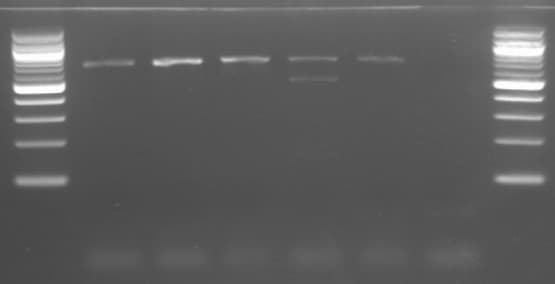✍️ Author: Dr Eleni Christoforidou
Home
Some of the genotyping results showing the gene of interest, compared to known gene sequences and to a molecular-weight size marker (DNA ladder on the left and right ends).
A Day in the Lab: Determining Genotypes with PCR and Gel Electrophoresis
🕒 Approximate reading time: 4 minutes
Today, the lab was abuzz with genotyping activity. We had DNA samples from the latest litters of the lab's colonies, and their genotypes needed to be determined to identify any genetic mutations in specific genes. Our techniques of choice were the Polymerase Chain Reaction (PCR) and agarose gel electrophoresis, which are routine yet integral processes in our lab, performed nearly every week. Today, I genotyped 22 DNA samples, guided by a relatively straightforward method detailed below.
Timelapse: Adding a purple loading dye to the samples to enhance the visibility of DNA progress on the gel. The dye also contains a reagent to increase the density of the samples relative to the running buffer, ensuring the samples sink in the well.
An In-depth Look at Today's Experiment
Genotyping determines the differences in an individual's genotype by comparing their DNA sequence for a specific gene against a reference sequence. We designed specific primers to bind to and amplify the gene of interest in the genomic DNA of a sample. This amplified gene is then run on an agarose gel - a process known as gel electrophoresis - to visualise the DNA and ascertain whether it is a wild-type or a mutant gene. Below, you can see some of the genotyping results we achieved.

These experiments provide crucial insights into the genetic profiles of our colonies, helping us understand the genetic variations at play.